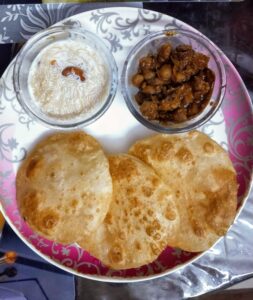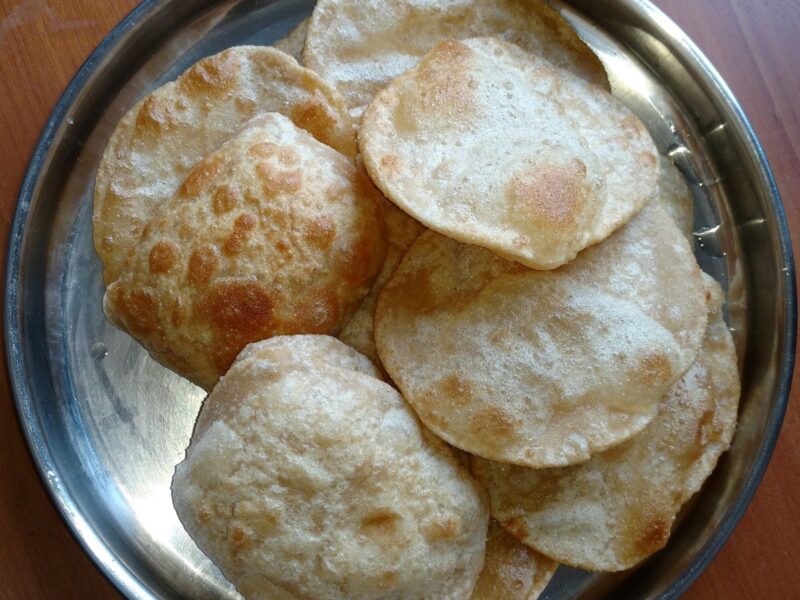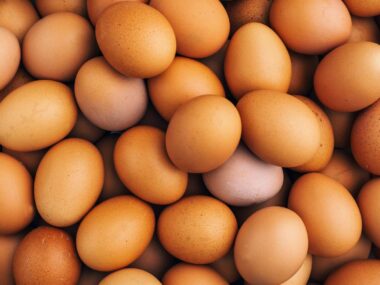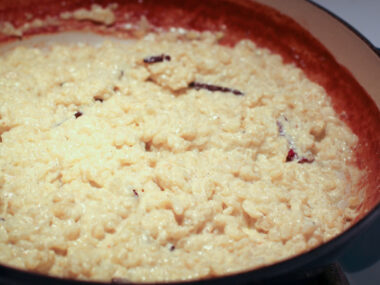Luchi and puri are beloved staples of Indian and Bangladeshi cuisine, cherished for their simplicity, versatility, and delicious flavour. These deep-fried breads, made from wheat flour dough, hold a special place in the hearts and palates of people across the Indian subcontinent. In this essay, we will delve into the ingredients and traditional methods used to make lunch and puri dough, as well as explore variations in recipes and regional preferences.
Ingredients
The ingredients used to make lunch and puri dough are relatively simple and readily available. The primary ingredient is wheat flour, known as atta, which forms the base of the dough. In addition to wheat flour, the following ingredients are commonly used:
- Water: Water is used to hydrate the flour and form a smooth, pliable dough. The amount of water required may vary depending on factors such as humidity and the quality of the flour.
- Salt: Salt is added to the dough to enhance the flavour of the luchi or puri. It is typically added in small quantities to taste.
- Oil or Ghee: Oil or ghee (clarified butter) is often added to the dough to improve its texture and flavour. Some recipes call for oil or ghee to be incorporated directly into the dough, while others use it for frying the luchi or puri.
Preparation

The preparation of luchi and puri dough follows a similar process, although there may be variations in the method and ingredients used. The basic steps for preparing luchi and puri dough are as follows:
- Mixing the Dough: In a large mixing bowl, combine the wheat flour and salt. Gradually add water, a little at a time, and knead the mixture until a smooth, elastic dough forms. The dough should be soft and pliable but not sticky. If the dough is too dry, add more water, and if it is too sticky, add more flour.
- Resting the Dough: Once the dough is kneaded to the desired consistency, cover it with a clean kitchen towel or plastic wrap and let it rest for at least 15-20 minutes. Allowing the dough to rest helps relax the gluten and makes it easier to roll out into rounds.
- Shaping the Dough: After resting, divide the dough into small, evenly sized portions. Roll each portion into a smooth ball between the palms of your hands. Lightly coat the balls of dough with oil or ghee to prevent them from drying out.
- Rolling Out the Dough: On a clean, lightly floured surface, flatten each ball of dough into a small disc using a rolling pin. Roll the dough out evenly into thin rounds, approximately 3-4 inches in diameter for luchi and slightly larger for Puri.
- Frying the Bread: Heat oil or ghee in a deep frying pan or kadai over medium heat. Once the oil is hot, carefully add the rolled-out dough rounds, one at a time. Fry the bread until it puffs up and turns golden brown on both sides, flipping it once during cooking.
- Draining and Serving: Once cooked, remove the luchi or puri from the oil using a slotted spoon and drain on paper towels to remove excess oil. Serve the bread hot with your choice of accompaniments, such as curries, chutneys, or pickles.
Variations and Regional Preferences
While the basic ingredients and preparation methods for luchi and puri remain consistent, there are variations and regional preferences that influence the final product. Some variations include:
- Flour Type: While wheat flour is the most common choice for making luchi and puri, other types of flour, such as whole wheat flour or semolina (sooji), may be used to create different textures and flavours.
- Leavening Agents: Some recipes for luchi and puri may include leavening agents such as baking powder or yeast to help the bread puff up and become lighter and fluffier.
- Flavourings and Spices: Additional flavourings and spices, such as ajwain (carom seeds), nigella seeds (kalonji), or ground spices like cumin or coriander, may be added to the dough for extra flavour.
- Cooking Method: While luchi and Puri are traditionally deep-fried, some recipes may offer alternative cooking methods such as shallow frying or baking for a healthier option.
- Serving Suggestions: The choice of accompaniments for luchi and puri may vary depending on regional preferences and personal taste. Common accompaniments include vegetable curries, lentil dishes, yoghurt, chutneys, and pickles.
In conclusion, luchi and puri are iconic staples of Indian and Bangladeshi cuisine, cherished for their simplicity, versatility, and delightful taste. The ingredients and preparation methods for making luchi and puri dough are relatively simple, requiring just a few basic ingredients and traditional techniques.
However, variations in recipes and regional preferences add depth and diversity to these beloved breads, making them a favourite choice for meals and celebrations across the Indian subcontinent. Whether enjoyed with spicy curries or savoury accompaniments, luchi and puri continue to hold a special place in the hearts and palates of food enthusiasts worldwide.










